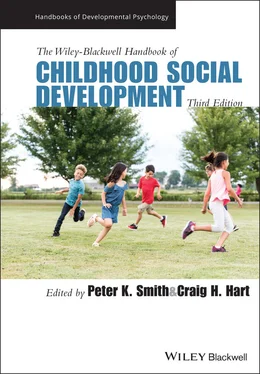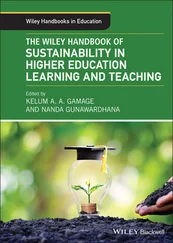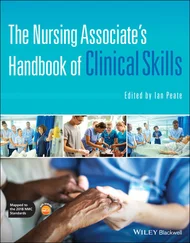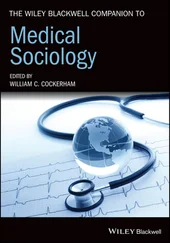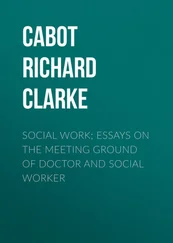49 Laffel, L. (1999). Ketone bodies: A review of physiology, pathophysiology and application of monitoring to diabetes. Diabetes/Metabolism Research & Reviews, 15(6), 412–426.
50 Lansford, J. E., Godwin, J., McMahon, R. J., Crowley, M., Pettit, G. S., Bates, J. E., Coie, J. D., & Dodge, K. A. (2021). Early physical abuse and adult outcomes. Pediatrics, 147(1), e20200873.
51 Lebel, C., Treit, S., & Beaulieu, C. (2019). A review of diffusion MRI of typical white matter development from early childhood to young adulthood. NMR in Biomedicine, 32(4), e3778.
52 Lemerise, E. A., & Arsenio, W. F. (2000). An integrated model of emotion processes and cognition in social information processing. Child Development, 71(1), 107–118.
53 [p] Li, T., Chen, X., Li, S., Jiang, Y., Feng, C., Wang, L., Camilleri, J. A., Eickhoff, S. B., & Stewart, J. L. (2020). Mapping common grey matter volume deviation across child and adolescent psychiatric disorders. Neuroscience and Biobehavioral Reviews, 115, 273–284.
54 [q] Lindsey, H. M., Wilde, E. A., Caeyenberghs, K., & Dennis, E. L. (2019). Longitudinal neuroimaging in pediatric traumatic brain injury: Current state and consideration of factors that influence recovery. Frontiers in Neurology, 10, 1296.
55 [r] Luby, J. L., Tillman, R., & Barch, D. M. (2019). Association of timing of adverse childhood experiences and caregiver support with regionally specific brain development in adolescents. JAMA Network Open, 2(9), e1911426.
56 Mah, A., Geeraert, B., & Lebel, C. (2017). Detailing neuroanatomical development in late childhood and early adolescence using NODDI. PLoS One, 12(8), e0182340.
57 [s] McClure, E. B., Monk, C. S., Nelson, E. E., Parrish, J. M., Adler, A., Blair, R. J., Fromm, S., Charney, D. S., Leibenluft, E., Ernst, M., & Pine, D. S. (2007). Abnormal attention modulation of fear circuit function in pediatric generalized anxiety disorder. Archives of General Psychiatry, 64(1), 97–106.
58 McDermott, C. L., Seidlitz, J., Nadig, A., Liu, S., Clasen, L. S., Blumenthal, J. D., Reardon, P. K., Lalonde, F., Patel, R., Chakravarty, M., Lerch, J., & Raznahan, A. (2019). Longitudinally mapping childhood socioeconomic status associations with cortical and subcortical morphology. Journal of Neuroscience, 39(8), 1365–1373.
59 McKenna, M. C., Scafidi, S., & Robertson, C. L. (2015). Metabolic alterations in developing brain after injury: Knowns and unknowns. Neurochemical Research, 40(12), 2527–2543.
60 Micheva, K. D., Weinberg, R. J., & Smith, S. J. (2020). A synapse census for the ages. Science, 369(6501), 253–254.
61 Moreno, E., Fernandez‐Marrero, Y., Meyer, P., & Rhiner, C. (2015). Brain regeneration in Drosophila involves comparison of neuronal fitness. Current Biology, 25(7), 955–963.
62 Motta, A., Berning, M., Boergens, K. M., Staffler, B., Beining, M., Loomba, S., Schramm, C., Hennig, P., Wissler, H., & Helmstaedter, M. (2019). Dense connectomic reconstruction in layer 4 of the somatosensory cortex. Science, 366(6469). doi: 10.1126/science.aay3134
63 [t] Muhlberger, A., Wieser, M. J., Gerdes, A. B., Frey, M. C., Weyers, P., & Pauli, P. (2011). Stop looking angry and smile, please: Start and stop of the very same facial expression differentially activate threat‐ and reward‐related brain networks. Social Cognitive and Affective Neuroscience, 6(3), 321–329.
64 [u] Nielsen, J. A., Zielinski, B. A., Fletcher, P. T., Alexander, A. L., Lange, N., Bigler, E. D., Lainhart, J. E., & Anderson, J. S. (2014). Abnormal lateralization of functional connectivity between language and default mode regions in autism. Molecular Autism, 5(1), 8.
65 Noack, H., Nolte, L., Nieratschker, V., Habel, U., & Derntl, B. (2019). Imaging stress: An overview of stress induction methods in the MR scanner. Journal of Neural Transmission (Vienna), 126(9), 1187–1202.
66 [v] Parkes, L., Satterthwaite, T. D., & Bassett, D. S. (2020). Towards precise resting‐state fMRI biomarkers in psychiatry: Synthesizing developments in transdiagnostic research, dimensional models of psychopathology, and normative neurodevelopment. Current Opinion in Neurobiology, 65, 120–128.
67 Pfefferbaum, A., Mathalon, D. H., Sullivan, E. V., Rawles, J. M., Zipursky, R. B., & Lim, K. O. (1994). A quantitative magnetic resonance imaging study of changes in brain morphology from infancy to late adulthood. Archives of Neurology, 51(9), 874–887.
68 Pujol, J., Soriano‐Mas, C., Ortiz, H., Sebastian‐Galles, N., Losilla, J. M., & Deus, J. (2006). Myelination of language‐related areas in the developing brain. Neurology, 66(3), 339–343.
69 Raichle, M. E. (2015). The brain’s default mode network. Annual Review of Neuroscience, 38, 433–447.
70 Rakic, P. (1978). Neuronal migration and contact guidance in the primate telencephalon. Postgraduate Medical Journal, 54 Suppl 1, 25–40.
71 [w] Redcay, E., & Warnell, K. R. (2018). A social‐interactive neuroscience approach to understanding the developing brain. Advances in Child Development and Behavior, 54, 1–44.
72 Root, A. E., Wimsatt, M., Rubin, K. H., Bigler, E. D., Dennis, M., Gerhardt, C. A., Stancin, T., Taylor, H. G., Vannatta, K., & Yeates, K. O. (2016). Children with traumatic brain injury: Associations between parenting and social adjustment. Journal of Applied Developmental Psychology, 42, 1–7. doi:10.1016/j.appdev.2015.10.002
73 Rubin, K. H., Coplan, R. J., & Bowker, J. C. (2009). Social withdrawal in childhood. Annual Review of Psychology, 60, 141–171.
74 [x] Ryan, N. P., Anderson, V. A., Bigler, E. D., Dennis, M., Taylor, H. G., Rubin, K. H., Vannatta, K., Gerhardt, C. A., Stancin, T., Beauchamp, M. H., Hearps, S., Catroppa, C., & Yeates, K. O. (2021). Delineating the nature and correlates of social dysfunction after childhood traumatic brain injury using common data elements: Evidence from an international multi‐cohort study. Journal of Neurotrauma, 38(2), 252–260
75 [y] Salokangas, R. K. R., Hietala, J., Armio, R. L., Laurikainen, H., From, T., Borgwardt, S., Riecher‐Rössler, A., Brambilla, P., Bonivento, C., Meisenzahl, E., Schultze‐Lutter, F., Haidl, T., Ruhrmann, S., Upthegrove, R., Wood, S. J., Pantelis, C., Kambeitz‐Ilankovic, L., Ruef, A., Dwyer, D. B., … & Koutsouleris, N. (2021). Effect of childhood physical abuse on social anxiety is mediated via reduced frontal lobe and amygdala‐hippocampus complex volume in adult clinical high‐risk subjects. Schizophrenia Research, 227, 101–109.
76 [z] Sato, W., & Uono, S. (2019). The atypical social brain network in autism: Advances in structural and functional MRI studies. Current Opinion in Neurology, 32(4), 617–621.
77 [aa] Schilbach, L., Eickhoff, S. B., Rotarska‐Jagiela, A., Fink, G. R., & Vogeley, K. (2008). Minds at rest? Social cognition as the default mode of cognizing and its putative relationship to the “default system” of the brain. Conscious and Cognition, 17(2), 457–467.
78 bb Schurz, M., Maliske, L., & Kanske, P. (2020). Cross‐network interactions in social cognition: A review of findings on task related brain activation and connectivity. Cortex, 130, 142–157.
79 Somerville, L. H. (2016). Searching for signatures of brain maturity: What are we searching for? Neuron, 92(6), 1164–1167.
80 Steiner, P. (2019). Brain fuel utilization in the developing brain. Annals of Nutrition & Metabolism, 75 Suppl 1, 8–18.
81 Sudre, G., Choudhuri, S., Szekely, E., Bonner, T., Goduni, E., Sharp, W., & Shaw, P. (2017). Estimating the heritability of structural and functional brain connectivity in families affected by Attention‐Deficit/Hyperactivity Disorder. JAMA Psychiatry, 74(1), 76–84.
82 Szilagyi, A., Zachar, I., Fedor, A., de Vladar, H. P., & Szathmary, E. (2016). Breeding novel solutions in the brain: A model of Darwinian neurodynamics. F1000Research, 5, 2416.
Читать дальше
